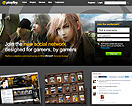Electronic Highways
Alternative social networks
Tired of Facebook? Need a break from Twitter? Bored with your Yahoo groups? Then take a walk on the wild side—try an alternative social network. Let me be your guide on the road less travelled.
Last.fm is a social network for music buffs. Your profile is updated with every song you play in an attempt to anticipate your musical tastes and recommend new, relevant tracks. It can connect you to other people who like what you like and can recommend songs from their music collections.
Playfire is a social network for gamers. With more than 40,000 titles, there is something here for every level of gamer. Playfire allows you to create stunning member profiles, build a virtual gaming collection to share with friends, create a “clan” Web site and join specialized gaming-discussion forums. Playfire supports XBOX360, PS3, PSP, Wii and NintendoDS gaming platforms.
Flixster is a popular social network for movie buffs. It has more than 30 million members and provides more than 2 billion movie ratings. Flixster allows users to share movie ratings, discover new movies and meet others with similar movie tastes. Users also can access movie show times, reviews, trailers and watch older movies, TV shows and videos online.
Xanga is a social network in blog format. Subscribing to other Xangas allows you to stay up to date without needing to manually visit each site. Your membership gives you a weblog, a photoblog, a videoblog, an audioblog, a "Pulse" (mini-blog) and a social-networking profile. Members have almost unlimited design options for their weblogs and a host of media features at their fingertips.
Tagged is the third largest social network in the U.S., and has more than 80 million members worldwide. Tagged's Web site includes identity features to express yourself, discovery features to form new social connections and interaction features to stay connected.
Linkedin is a social network for professionals. The network boasts more than 60 million members from 200 countries, with more than half of their members from outside of the United States. You can find, be introduced to and collaborate with qualified professionals that you need to work with to accomplish your goals. You also can be found for business opportunities, as well as find potential partners. Through your linkedin membership, you can even discover inside connections that can help you land a job.
FriendFeed is an intuitive, real-time conversation network, very similar to Facebook. The departure comes in two areas: speed and accessibility. FriendFeed allows you to post your comments onto the Web for everyone to read, even non-members. It also uses real-time streaming, which allows it to be used as a chat interface between one or many friends. However, having a real-time feed of your friends’ and contacts’ status updates can get a little annoying as your page constantly refreshes and items you are reading get pushed down the page. FriendFeed also has given you the ability to create a private “chat room” amongst your friends, dubbed “FriendFeed Feedback.” Similar to a group page, the private room feature lets you create a feed that is restricted to a number of users, can be marked as public or private, and can be used as a communications tool to enable chats in a forum-like environment.
These seven networks are only a small representation of what is available on the wild side. There are social networks for cyclists, crafters, the environmentally conscious, moms—virtually anything you can think of. So get out of the Facebook rut, leave you old high school “frienemies” behind and connect with people who share your real hidden passion.
—Cynthia Tysick, Arts and Sciences Libraries


Reader Comments